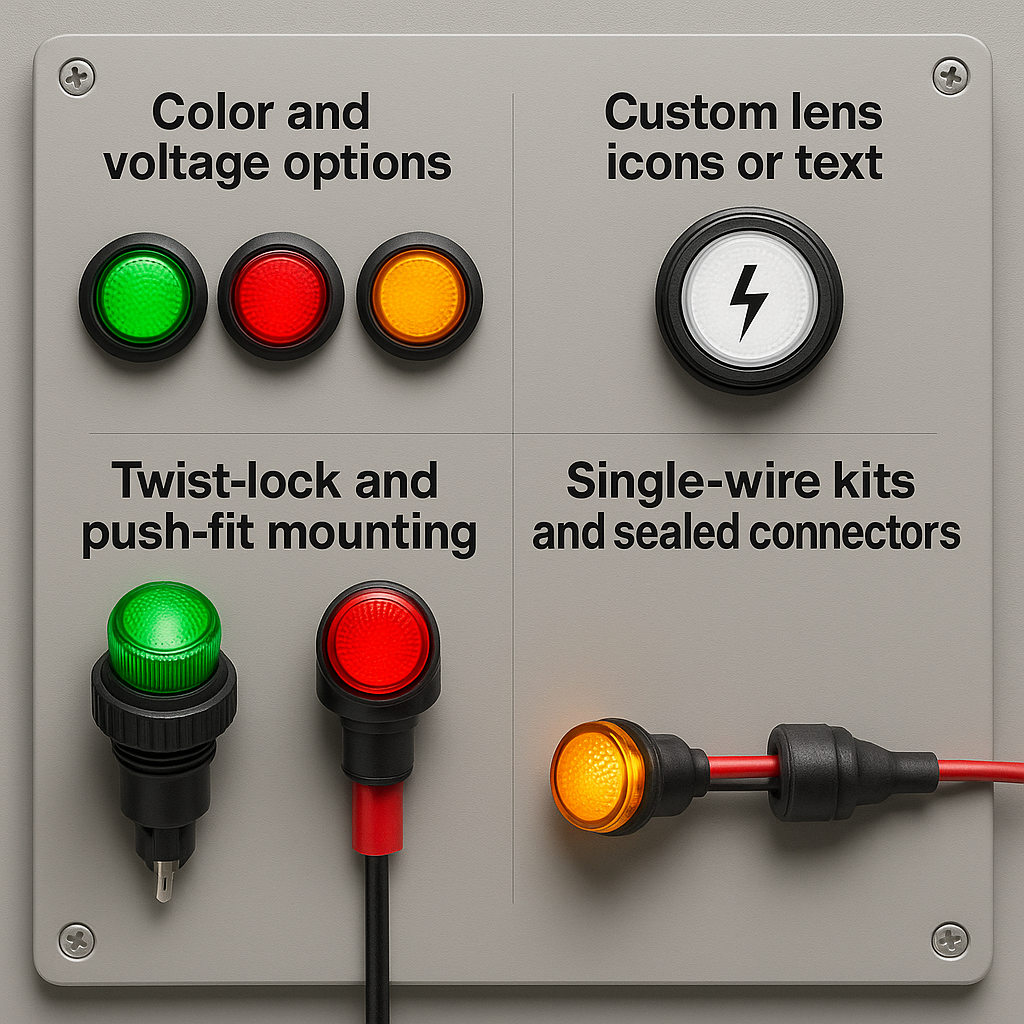As renewable energy infrastructure expands globally, maximizing safety and performance is non-negotiable. Illuminated indicators play a critical role in ensuring reliable, real-time visual feedback for wind, solar, and hydroelectric plant control systems. More than a design element, high-performance LED indicators are essential for plant uptime, operator response, OSHA compliance, and profitability. At VCC, we bring decades of experience delivering high-reliability HMI components tailored for green energy ecosystems.
The Role of Illuminated Indicators in Renewable Energy Control Panels
In control rooms and remote enclosures, indicators convert sensor data and system feedback into immediate, actionable signals. Misinterpreted status lights or delayed alerts can result in equipment failure or safety hazards. That's why VCC indicators are designed to meet or exceed IEC 60204-1 standards for color coding, brightness, and environmental resistance.
Color conventions remain critical: green means usual, amber signals caution, and red flags faults. But visibility and durability matter just as much as hue. VCC indicators feature high-intensity illumination, wide viewing angles, and IP67-rated enclosures for moisture and dust protection—ideal for field-deployed solar and wind systems.
Built to Perform in Harsh Environments
Unlike legacy neon or filament indicators, VCC’s LED solutions offer solid-state reliability with extremely low power draw. These energy-efficient components extend system MTBF, reduce service trips, and operate reliably in vibration-prone or weather-exposed enclosures.
For wind turbine controllers, solar combiner boxes, or grid-tied inverters, each indicator is an essential point of status clarity. Our rugged, sealed designs withstand rain, dust, UV exposure, and thermal cycling common to renewable energy infrastructure.
LED indicators, or light-emitting diodes, are pivotal components in human machine interfaces (HMIs). These indicators provide visual feedback to users, operators, and machines, ensuring smooth and safe operations across various applications. The various functions of LED indicators cater to different applications, from industrial controls to manufacturing processes and electronic devices, providing bright, visible light that can be seen from a distance. This high visibility is crucial in environments where safety and clear communication are paramount. Unlike traditional light bulbs, LED indicators offer superior durability and efficiency, making them an ideal choice for modern control systems.
Smart HMI Design for Crowded Panels
Modern renewable power equipment demands more data—and tighter panel layouts. Our DT Series indicators and illuminated pushbuttons integrate multiple signal states within a compact footprint. Features like dual or tri-color outputs, sequenced illumination, and custom iconography ensure that operators can distinguish complex signals instantly.
Lens options include dome, convex, and low-profile styles to match glare, visibility, or space needs. Our color-matched, molded housings help minimize errors during field service while improving speed of response.

Easier Maintenance and Lifecycle Management
Field technicians often report legacy indicators as a root cause of missed alerts or delayed diagnostics. VCC’s low-current LED indicators provide long service life, modular mounting options, and enhanced visibility—even in high-noise EMI environments or outdoor daylight conditions.
We support customization through:
• Color and voltage options
• Custom lens icons or text
• Twist-lock and push-fit mounting
• Single-wire kits and sealed connectors
Whether retrofitting aging plants or building next-gen BESS and inverter platforms, our illuminated indicators deliver measurable improvements in visibility, reliability, and lifecycle value.
Explore Our Indicator Solutions:
Frequently Asked Questions
Q1. What makes an indicator suitable for renewable energy use? High environmental sealing (IP6X), low-power solid-state performance, sunlight visibility, vibration resistance, and color clarity aligned with OSHA and IEC standards.
Q2. How do indicator failures impact plant operations? Failures can lead to delayed fault detection, increased downtime, safety risks, and costly SLA violations. Reliable indicators minimize these operational threats.
Q3. Are LED indicators more durable than traditional lamps? Yes. VCC’s LED indicators outlast neon and incandescent types by thousands of hours, reducing replacement frequency and labor costs.
Q4. What documentation is required for the compliant use of indicators? Most projects reference IEC-60204-1, UL listings, and site-specific testing logs or audits. VCC provides all relevant specs and compliance data.
Q5. Do LED indicators help reduce energy and heat buildup in panels? Absolutely. Our low-current LED indicators reduce localized heating and improve overall system efficiency in tight or thermally sensitive control panels.







